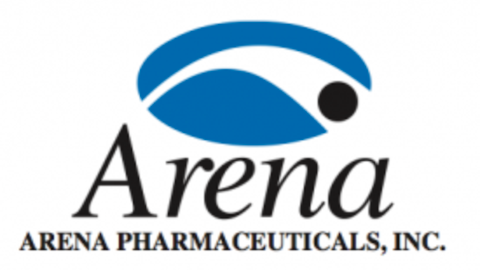
Unfortunately, doctors have not been knocking down the doors to prescribe Qsymia, and I foresee a similar slow start for Belviq when it launches this June. This wasn’t unexpected for the new treatments, but over time the prospects should brighten. Market research performed by Orexigen Therapeutics, Inc. (NASDAQ:OREX) suggests that obesity prescriptions could grow 300% to 400% in the next five years from just 7.8 million in 2012. Given the obesity market’s ability to support multiple blockbusters, investors may be wondering what other weight-loss therapies are being developed elsewhere in the industry. Here are three compounds in the pipeline that could become the future of the fight against obesity.
Contrave (bupropion and naltrexone)

The active ingredient naltrexone. Source: WikiCommons.
After completing four phase 3 trials, Orexigen Therapeutics, Inc. (NASDAQ:OREX) submitted a New Drug Application for Contrave in March 2010. An advisory committee voted 13 to seven in favor of the drug and 11 to eight that a cardiovascular study be completed post-approval rather than pre-approval. Despite the vote, the FDA issued a complete response letter in Jan. 2011 requesting the additional safety study be performed as a requirement for approval. Thus, Orexigen Therapeutics, Inc. (NASDAQ:OREX) and its investors have been forced to wait several years.
The cardiovascular study, named the Light Study, is now under way with 8,900 patients. Orexigen Therapeutics, Inc. (NASDAQ:OREX) believes Contrave could be resubmitted with the additional safety data by the end of 2013 or early 2014 with approval occurring shortly thereafter. While investors wait for the drug to be proven safe, there is no questioning its effectiveness. The drug was shown to be three times more effective than placebo in helping patients lose at least 5% of their body weight.
Empatic (bupropion and zonisamide)

The active ingredient zonisamide. Source: WikiCommons.
Orexigen Therapeutics, Inc. (NASDAQ:OREX) is also responsible for developing the drug Empatic (Think the company is sold on the potential of the obesity market?) Similar to Contrave, Empatic is a polytherapy, or combination of multiple drugs. The company completed a phase 2b trial that met its primary efficacy endpoint and was proven more effective than combinations of either drug plus placebo.
The good news is that the FDA won’t require a cardiovascular safety trial for Empatic if phase 3 data are comparable to data from Contrave’s trials. That would allow Orexigen Therapeutics, Inc. (NASDAQ:OREX) to save much-needed cash and speed Empatic’s time to the market as long as other problems don’t arise. The bad news is that the phase 2b trial was completed in Sept. 2009 and phase 3 trials have yet to begin. The company is actively searching for a developmental and commercial partner before proceeding with late-stage studies.
Tesofensine
Don’t worry if you have never heard of tesofensine. The drug is owned by a small Denmark-based biopharmaceutical company named NeuroSearch and was originally investigated for Alzheimer’s and Parkinson’s disease. The company nipped the trials after a dismal efficacy showing, but was intrigued by one nagging side effect: weight loss. And a lot of it.
A phase 2 obesity trial with 203 patients demonstrated that tesofensine and diet was much more effective than placebo and diet. That isn’t the exciting part. Over a 24-week period patients taking a dose of just 0.25 mg of the drug lost 4.5% of their body weight, compared to 2% taking placebo. Patients taking 0.50 mg and 1.0 mg lost 9.2% and 10.6%, respectively.
Not only are the weight-loss totals more impressive than competing compounds approved or in development, but the dosing is insanely small. Consider that Contrave consists of 392 mg of active ingredient, Qsymia’s minimum dose totals 26.75 mg, and Belviq must be taken twice daily for a total of 20 mg. Will a dramatically smaller dose result in a safer weight-loss drug?
Foolish bottom line
Before you plunge your portfolio knee-deep into an Orexigen Therapeutics, Inc. (NASDAQ:OREX) position, consider that Contrave and Empatic are the only two drugs in the company’s pipeline. Even with approval, it will have to successfully navigate the marketing phase for either weight-loss therapy to be successful — something Arena Pharmaceuticals, Inc. (NASDAQ:ARNA) and VIVUS, Inc. (NASDAQ:VVUS) have yet to figure out. Of course, the blockbuster potential for a safe and effective obesity treatment remains. Will one of these three pipeline drugs make you a lot of money one day? It is quite possible, but it is still too soon to say.
The article 3 Pipeline Obesity Treatments You Should Watch originally appeared on Fool.com and is written by Maxx Chatsko.
Fool contributor Maxx Chatsko has no position in any stocks mentioned. Check out his personal portfolio, his CAPS page, or follow him on Twitter @BlacknGoldFool to keep up with his writing on energy, bioprocessing, and emerging technologies.The Motley Fool has no position in any of the stocks mentioned, either.
Copyright © 1995 – 2013 The Motley Fool, LLC. All rights reserved. The Motley Fool has a disclosure policy.
